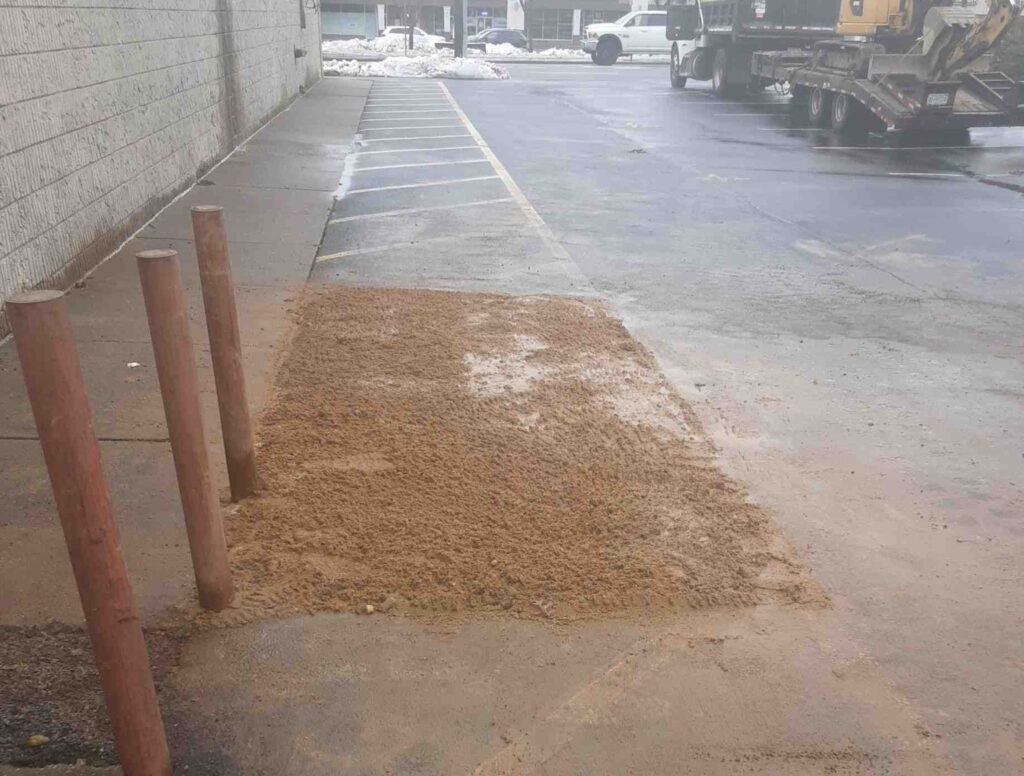When dealing with an underground or aboveground oil tank, property owners must decide between removing the tank entirely or abandoning it in place. Each option has its advantages and specific regulatory requirements. Understanding the differences between tank removal and tank abandonment can help you make the right choice for your property, budget, and environmental safety.
What Is Oil Tank Removal?
Oil tank removal involves completely excavating and disposing of an old or unused tank. This process ensures that the tank does not cause future leaks, contamination, or regulatory issues.
Steps in the Oil Tank Removal Process
1️⃣ Permitting & Inspection – A professional team obtains local permits and assesses the tank’s condition.
2️⃣ Oil & Sludge Removal – Any remaining fuel or sludge is pumped out and disposed of properly.
3️⃣ Excavation & Tank Extraction – The area around the tank is dug out, and the tank is safely removed.
4️⃣ Soil Testing – Soil samples are taken to check for contamination or leaks.
5️⃣ Backfilling & Site Restoration – The hole is filled with clean soil, and the area is restored.
6️⃣ Regulatory Documentation – A closure report is provided to prove compliance with state and local laws.
Pros of Tank Removal
✅ Eliminates Future Liability – A removed tank won’t corrode, leak, or cause future problems.
✅ Ideal for Property Sales – Many buyers and lenders prefer tank removal over abandonment.
✅ Ensures Environmental Safety – Removes potential contamination risks.
Cons of Tank Removal
❌ More Expensive Than Abandonment – Excavation and disposal add to labor and material costs.
❌ Disruptive to Landscaping – Requires digging, which may disturb driveways, gardens, or patios.
What Is Oil Tank Abandonment?
Oil tank abandonment allows a tank to remain underground, but it must be properly decommissioned to meet environmental and safety regulations. This is an option when removal is too disruptive or expensive.
Steps in the Oil Tank Abandonment Process
1️⃣ Permitting & Inspection – A professional team secures permits and conducts an assessment.
2️⃣ Oil & Sludge Removal – The tank is pumped out and cleaned.
3️⃣ Tank Filling – The empty tank is filled with an inert material like sand, concrete, or foam to prevent collapse.
4️⃣ Soil Testing – Samples are taken to ensure no contamination is present.
5️⃣ Sealing & Documentation – The tank is sealed, and official documentation is provided.
Pros of Tank Abandonment
✅ Less Expensive Than Removal – Avoids excavation and disposal costs.
✅ Minimal Property Disruption – No need for digging up landscaping, driveways, or structures.
✅ Regulatory Compliance – If done properly, it meets environmental safety requirements.
Cons of Tank Abandonment
❌ Still a Potential Liability – Future leaks or regulatory changes may require removal later.
❌ May Affect Property Value – Some buyers and mortgage lenders prefer tank removal.
❌ Limited Future Use of the Land – The abandoned tank can’t be built over or used for new construction.
Which Option Is Right for You?
| Factor | Tank Removal | Tank Abandonment |
|---|---|---|
| Cost | More expensive | More affordable |
| Property Value | Increases value | May lower value |
| Long-Term Safety | No future risk | Could still be a liability |
| Environmental Impact | Completely removed | Requires proper sealing |
| Regulatory Compliance | Fully compliant | Must meet local regulations |
| Disruption to Property | Requires excavation | Minimal disruption |
Choose Tank Removal If:
✔ You want to eliminate all future risks and liabilities.
✔ You’re selling your property and want a clean environmental record.
✔ You’re in an area where regulations favor removal over abandonment.
Choose Tank Abandonment If:
✔ The tank is difficult to remove due to structures, landscaping, or cost concerns.
✔ There is no sign of leaks or soil contamination.
✔ You plan to keep the property long-term and don’t anticipate resale concerns.
C2G: Your Trusted Oil Tank Specialists
C2G provides expert oil tank removal and abandonment services across:
📍 Long Island – 165 Sherwood Avenue, Farmingdale, NY 11735 | 📞 631-414-7757
📍 Hudson Valley – 83 South Putt Corners Road, New Paltz, NY 12561 | 📞 845-255-4900
📍 Westchester – 520 White Plains Road, Suite 500, Tarrytown, NY 10591 | 📞 914-357-8275
📍 Connecticut – 25 Mallane Lane, Naugatuck, CT 06770 | 📞 203-437-6717
📍 New Jersey – 1000 Wyckoff Avenue, 3rd Floor, Mahwah, NJ 07430 | 📞 201-574-0555
Need Help Deciding Between Removal or Abandonment?
C2G’s environmental experts can assess your tank’s condition, local regulations, and budget to help you choose the best solution. Contact your nearest location today!
📞 Call Now for a Consultation!

